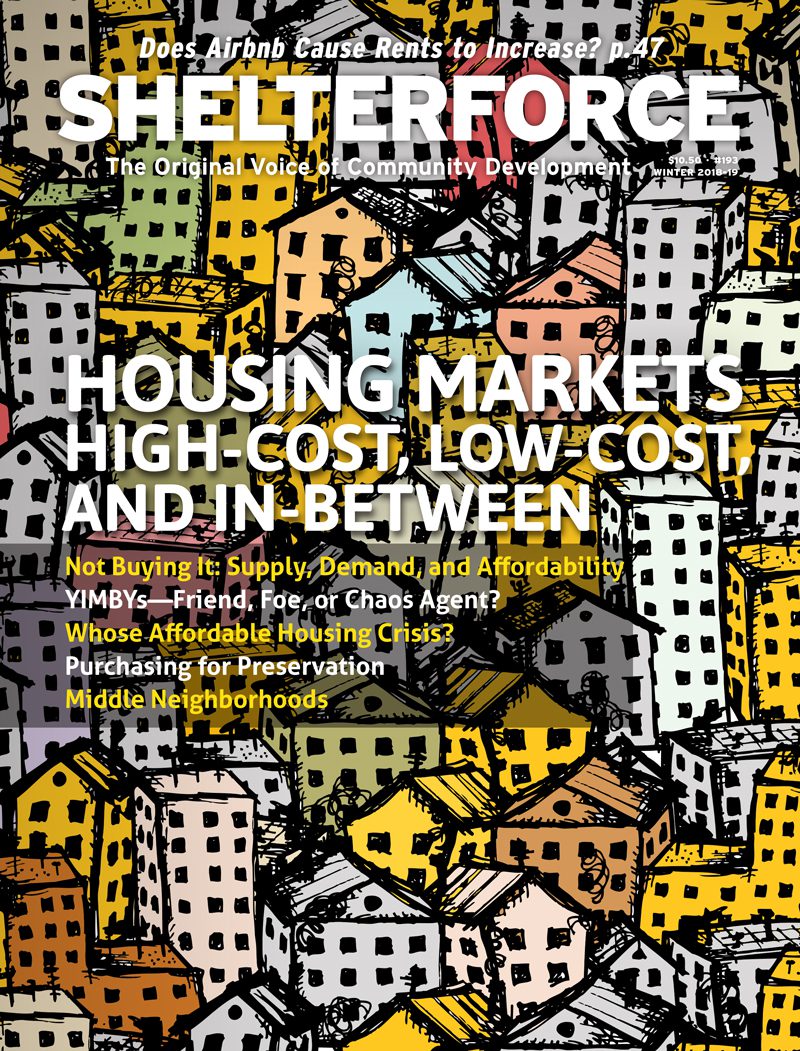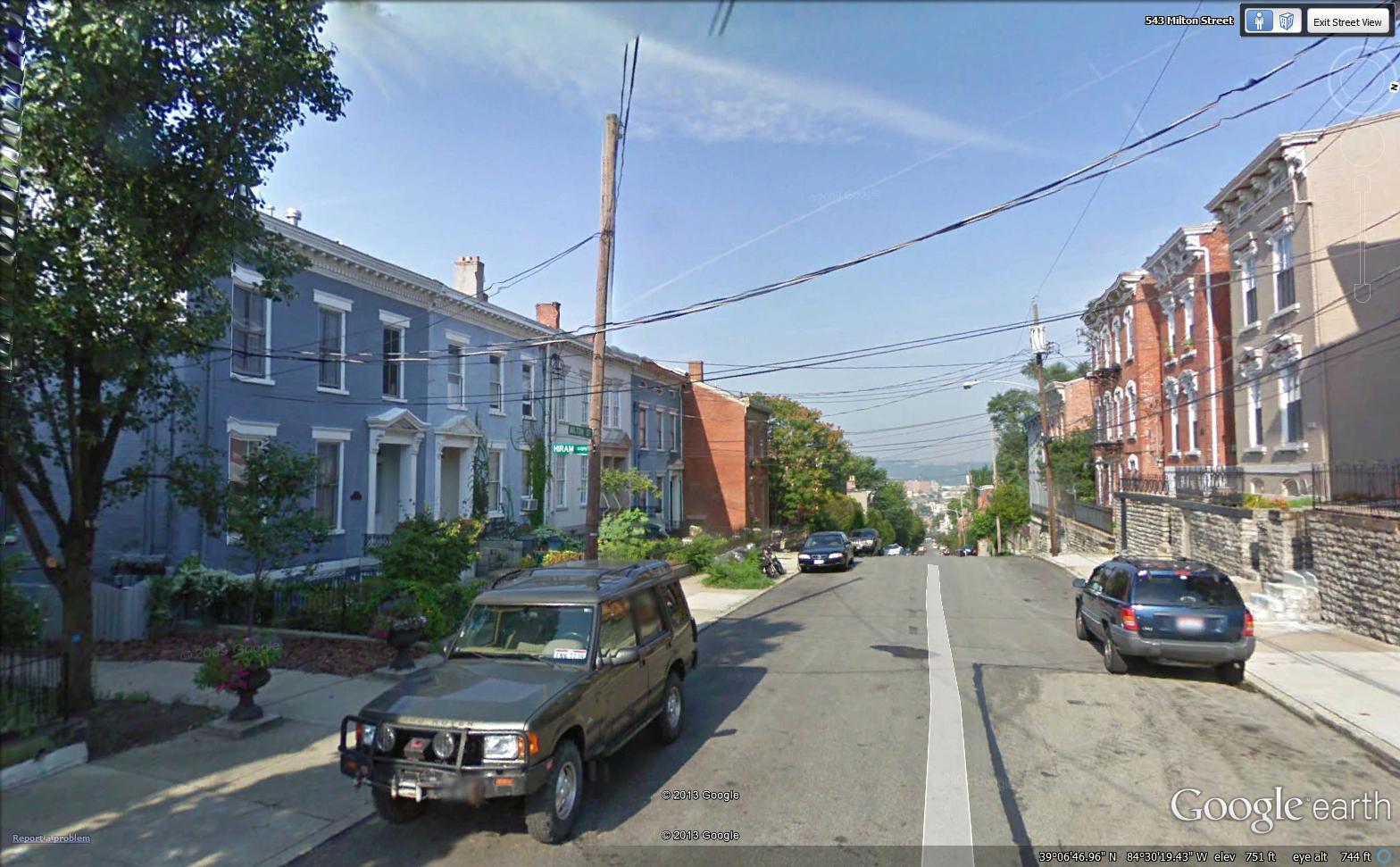
That’s because the holiday visitors belong to a “generation priced out” of America’s hottest urban markets for single-family homes, condos, and rental apartments. According to Berkeley, California, author Randy Shaw, skyrocketing prices for all three forms of housing have created a generational divide, with major political implications for progressive city governments and advocates of affordable housing.
On one side, we find older Americans, of varying income levels, who were able to take advantage of past market conditions, local zoning practices, and/or homeownership incentives to secure affordable housing that’s now in short supply for their own offspring. On the other side are growing numbers of younger people—poor, working-class, and even professional middle-class—who struggle to put a roof over their heads that’s not on top of someone else’s garage. (As we saw in the film Sorry to Bother You—Boots Riley’s ode to millennial life in rapidly gentrifying Oakland—it’s better in a rent-paying pinch if the garage owner is your uncle.).
Progressive activists who are part of the housing precariat should get Shaw’s new book. It’s full of informative history on urban housing policy, plus useful political advice from a longtime foe of landlords and developers in the much-contested but increasingly unaffordable terrain of San Francisco. Generation Priced Out: Who Gets to Live in The New Urban America provides detailed community organizing case studies that show how we can keep urban neighborhoods from becoming further devoid of racial, class, and ethnic diversity due to market-driven gentrification.
Shaw’s marching orders are simple and sensible: “cities must preserve and expand housing for low-income residents, the working and middle class . . . strengthen tenant and rental housing protections . . . change zoning laws to allow multi-unit buildings in single-family, home-zoned neighborhoods, and join groups like the National Low Income Housing Coalition to demand more federal housing assistance for those unable to afford market rates.”
Longtime Tenant Advocate
All that is easier said than done, as the author knows well because he’s been an affordable housing advocate for nearly 40 years. Shaw got involved in housing issues after graduating from Hastings Law School in San Francisco. He helped found and now directs that city’s Tenderloin Housing Clinic (THC), a key defender of low-income, foreign-born renters faced with gentrification-driven eviction. (He’s also a Shelterforce contributor.)
In the poor neighborhood most directly impacted by the author and his staff of several hundred, THC has become San Francisco’s largest provider of permanent housing for homeless single adults. Its tenants live in single-room occupancy (SRO) hotels managed or leased by THC, which provides supportive services. Shaw’s nonprofit has led the fight for SRO tenant protections and against conversion of SRO buildings to nonresidential purposes.
In the early 1990s, Shaw helped win citywide ballot initiatives that strengthened housing code enforcement and reduced how much landlords could annually raise rents by more than half. Shaw became a leading advocate for expanding rent regulation throughout California, most recently via Proposition 10, a ballot measure that industry groups spent $80 million to defeat in November 2018. (Much of the “Vote No” advertising targeted single-family homeowners with the message that rent control would reduce their property values).
Shaw is uniquely equipped to survey the current national housing landscape and demonstrate how it could be—and, in some places, is being—reshaped more equitably. While the book draws heavily on the author’s own Bay Area experience, it also takes us on a tour of affordable housing fights around the country, starting in southern California. In Los Angeles, Shaw describes how working-class enclaves like Boyle Heights and Highland Park have been “targeted by speculators for upscale transformation.” Despite community resistance, LA tenants have paid a heavy price for what Shaw calls the “enormous political power” wielded by local homeowner associations and landlord organizations.
In Austin, Texas, Shaw discovers that a “beacon of progressivism in a deeply conservative state” has a dark underside of “tenant displacement, neighborhood gentrification, and rising social and economic inequality.” Fifty-five percent of Austin residents are renters. But African Americans, Latinos, and whites who can’t afford to buy a home have few rights and protections. Fortunately, a younger generation of political activists, including 29-year-old city councilman Gregario “Greg” Casar, are helping low-income tenants get organized so they can challenge and change land-use practices that restrict housing supply and increase home prices.
In Seattle, Shaw reports on greater local progress of building new units. This has made housing cheaper than it would have been otherwise, at least compared to San Francisco (little consolation for sure). Shaw attributes Seattle’s more “pro-housing path” to a comprehensive city hall-driven Housing Affordability and Livability plan, voter approval of regular measures to fund new construction, a faster new building approval process, and factors like local environmentalists being in favor of infill housing to reduce Bay Area-style suburban sprawl. In addition, Shaw credits former Seattle Mayor Ed Murray for his willingness to clip the wings of neighborhood councils dominated by older white homeowners who are hostile to greater density in single-family neighborhoods.
A 10-Step Program
Meanwhile, between 2010 and 2017, 546,000 new jobs were created in Bay Area cities but only 76,000 new housing units were constructed to house new residents. To rectify this imbalance between supply and demand, the author proposes a 10-step program for California and other states. He favors larger projects built along transit lines, housing of increased height and density, and curbs on exclusionary zoning that limits the growth of rental housing in homeowner communities.
“Cities that support racial and economic diversity must walk the talk by ending exclusionary zoning laws that promote inequality,” Shaw writes. “These include single-family home zoning, restrictive height and density limits, large minimum lot sizes, and overly stringent occupancy restrictions. Such measures are the pillars of a ‘neighborhood preservation’ agenda that has transformed affordable communities into luxury neighborhoods.”
According to Shaw, cities should also pressure private developers of market-rate housing to include a percentage of affordable units in their projects, an approach called inclusionary housing. “Where state law bars this strategy, cities should impose a development linkage fee to raise funds for affordable housing” constructed elsewhere. He favors “upzoning deals” in which cities would “offer height and density bonuses to developers in return for affordable units,” arguing that this approach has helped “expand working and middle-class housing opportunities in Seattle without triggering gentrification.” He notes, however, that in New York City, a Bloomberg-de Blasio variation of the same strategy merely “accelerated the upscale transformation of once-affordable neighborhoods.”
Given the longtime inadequacy of federal housing funding, Shaw emphasizes the importance of direct municipal action. He proposes using more citywide ballot initiatives to raise funds for affordable housing, making unused public land available for its construction, and creating nonprofit community land trusts to acquire privately owned buildings in neighborhoods facing displacement and gentrification.
Existing renters can be better protected in several ways, he argues. Stronger code enforcement would prevent more landlords from letting their properties deteriorate to the point where tenants are forced “to vacate affordable but unhealthy units, thus paving the way for renovations that bring in far more affluent tenants.” For similar reasons, city officials should restrict demolitions, unit mergers, condominium and SRO building conversions into tourist hotels, because all have the effect of depleting available rental housing for poor and working people.
The Struggle for Rent Control
Last, but not least, Shaw stresses the importance of more rent-control victories, both in states where legislatures have prohibited local rent regulation ordinances and in others, like California, where their scope has been restricted. As Shaw notes, “statewide rent control bans were passed in a much more affordable housing environment” but now “deny cities like Austin, Boston, Portland, and Seattle a tool that localities need to address their affordability crises.”
Today, among those priced out in “progressive cities” are unionized teachers, nurses, firefighters, hotel workers, janitors, and other downtown workers whose negotiated wage increases are eaten up by rent hikes and higher mortgage costs, or the expense of commuting from outlying areas where housing is more affordable. Despite the lopsided November defeat of a ballot measure that would have enabled cities like Oakland, Berkeley, or San Francisco to extend rent control to single-family homes and apartments built since 1995, Shaw remains optimistic that the stage has been set for future victories.
That’s because California unions were more unified behind tenants in the Proposition 10 campaign than ever before. Local grassroots pressure led the mayor, city council, and county supervisors in Los Angeles to back Prop 10. Members of the Los Angeles Tenants Union and LA chapter of Democratic Socialists of America have successfully used confrontational tactics to prevent tenant evictions and turned their city into a hotbed of tenant activism, Shaw reports.
As tenant struggles become a bigger focus of activist recruitment and training throughout the country, Shaw’s book will be in much demand as an essential organizing guide for people, of all generations, who are priced out of affordable housing.






Comments